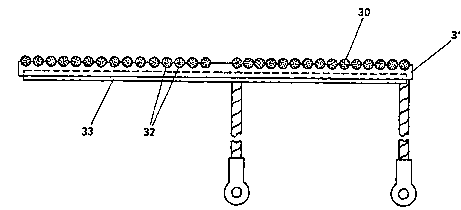Some of the information on this Web page has been provided by external sources. The Government of Canada is not responsible for the accuracy, reliability or currency of the information supplied by external sources. Users wishing to rely upon this information should consult directly with the source of the information. Content provided by external sources is not subject to official languages, privacy and accessibility requirements.
Any discrepancies in the text and image of the Claims and Abstract are due to differing posting times. Text of the Claims and Abstract are posted:
| (12) Patent Application: | (11) CA 2183061 |
|---|---|
| (54) English Title: | INDUCTION HEATING ELEMENT |
| (54) French Title: | ELEMENT CHAUFFANT PAR INDUCTION |
| Status: | Deemed Abandoned and Beyond the Period of Reinstatement - Pending Response to Notice of Disregarded Communication |
| (51) International Patent Classification (IPC): |
|
|---|---|
| (72) Inventors : |
|
| (73) Owners : |
|
| (71) Applicants : |
|
| (74) Agent: | GOWLING WLG (CANADA) LLP |
| (74) Associate agent: | |
| (45) Issued: | |
| (86) PCT Filing Date: | 1995-02-09 |
| (87) Open to Public Inspection: | 1995-08-17 |
| Examination requested: | 2002-01-10 |
| Availability of licence: | N/A |
| Dedicated to the Public: | N/A |
| (25) Language of filing: | English |
| Patent Cooperation Treaty (PCT): | Yes |
|---|---|
| (86) PCT Filing Number: | PCT/GB1995/000258 |
| (87) International Publication Number: | WO 1995022239 |
| (85) National Entry: | 1996-08-09 |
| (30) Application Priority Data: | ||||||
|---|---|---|---|---|---|---|
|
A heating element for an inductive cooking hob comprises a flat spirally-wound coil (30) consisting of a plurality of parallel insulated
conductors. The coil is wound in a spirally-extending groove (32) disposed on the upper surface of a plastics former (31). A circular base
(33) of highly magnetically permeable material is disposed on the underside of the former (31). The base (31) focuses the magnetic field
generated by the coil into a heating area above the coil, and also prevents any surrounding metalwork from inadvertently being heated.
Un élément chauffant pour une plaque de cuisson à induction comprend un serpentin plat enroulé en spirale (30) consistant en une pluralité de conducteurs parallèles et isolés. Le serpentin est enroulé dans une rainure (32) en forme de spirale disposé à la surface supérieure d'une plaque de support en plastique (31). Une base circulaire (33) constituée en un matériau à haute perméabilité magnétique est disposée sur la face inférieure de la plaque de support (31). La base (31) focalise le champ magnétique généré par le serpentin dans une zone de chauffe au-dessus du serpentin, et empêche également toute partie métallique environnante de chauffer de manière indue.
Note: Claims are shown in the official language in which they were submitted.
Note: Descriptions are shown in the official language in which they were submitted.

2024-08-01:As part of the Next Generation Patents (NGP) transition, the Canadian Patents Database (CPD) now contains a more detailed Event History, which replicates the Event Log of our new back-office solution.
Please note that "Inactive:" events refers to events no longer in use in our new back-office solution.
For a clearer understanding of the status of the application/patent presented on this page, the site Disclaimer , as well as the definitions for Patent , Event History , Maintenance Fee and Payment History should be consulted.
| Description | Date |
|---|---|
| Inactive: IPC from MCD | 2006-03-12 |
| Application Not Reinstated by Deadline | 2004-02-09 |
| Time Limit for Reversal Expired | 2004-02-09 |
| Deemed Abandoned - Failure to Respond to Maintenance Fee Notice | 2003-02-10 |
| Letter Sent | 2002-03-14 |
| Inactive: Application prosecuted on TS as of Log entry date | 2002-03-14 |
| Inactive: Status info is complete as of Log entry date | 2002-03-14 |
| Request for Examination Requirements Determined Compliant | 2002-01-10 |
| All Requirements for Examination Determined Compliant | 2002-01-10 |
| Application Published (Open to Public Inspection) | 1995-08-17 |
| Abandonment Date | Reason | Reinstatement Date |
|---|---|---|
| 2003-02-10 |
The last payment was received on 2002-01-04
Note : If the full payment has not been received on or before the date indicated, a further fee may be required which may be one of the following
Please refer to the CIPO Patent Fees web page to see all current fee amounts.
| Fee Type | Anniversary Year | Due Date | Paid Date |
|---|---|---|---|
| MF (application, 3rd anniv.) - small | 03 | 1998-02-09 | 1998-01-16 |
| MF (application, 4th anniv.) - small | 04 | 1999-02-09 | 1999-02-03 |
| MF (application, 5th anniv.) - small | 05 | 2000-02-09 | 2000-01-06 |
| MF (application, 6th anniv.) - small | 06 | 2001-02-09 | 2001-01-11 |
| MF (application, 7th anniv.) - small | 07 | 2002-02-11 | 2002-01-04 |
| Request for examination - small | 2002-01-10 |
Note: Records showing the ownership history in alphabetical order.
| Current Owners on Record |
|---|
| INDUCED ENERGY LIMITED |
| Past Owners on Record |
|---|
| MALCOLM ROBERT SNOWBALL |